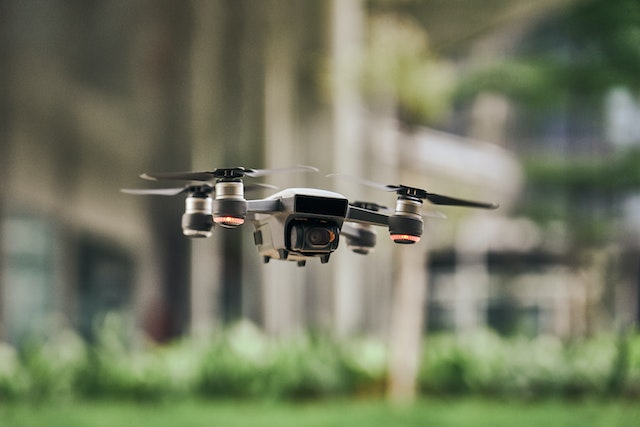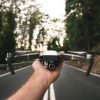In the past few decades, technological advancements have propelled us into an era where the impossible seems achievable, and the unimaginable is within reach. One such marvel of modern technology is the rise of commercial drones, also known as unmanned aerial systems (UAS). These flying wonders have transformed various industries by offering innovative solutions to age-old challenges. From delivery services to agriculture, surveying, and entertainment, the multifaceted uses of commercial drones have revolutionized the way we perceive and conduct business.
As of 2021, the global market for commercial drones was estimated to be around $5.8 billion, with strong growth projected in the coming years. In 2022, this market witnessed a significant expansion, reaching approximately $7.2 billion, indicating a rapid adoption of drone technology across various sectors.
Forecasts for the future are equally promising. By 2025, the commercial drone market is projected to exceed $11 billion, propelled by ongoing technological advancements, increasing applications, and a growing demand for efficient and cost-effective solutions. As industries continue to recognize the benefits of integrating drone technology into their operations, this market is poised to undergo transformative growth.
- Aerial Photography and Videography: Elevating Creativity
Gone are the days of expensive helicopter rides or cumbersome cranes for capturing breathtaking aerial shots. With commercial drones equipped with high-resolution cameras, photographers and filmmakers can capture stunning visuals from vantage points that were previously out of reach. Aerial shots provide a unique perspective, making cinematography more dynamic and photography more captivating. This technology has found its way into industries like real estate, tourism, and even event coverage.
2. Logistics and Delivery: Speeding Up the Last Mile
The concept of drone deliveries has transitioned from science fiction to reality. Companies like Amazon and DHL have been exploring the feasibility of using drones for last-mile deliveries, reducing the time and resources required to transport goods. Drones can navigate through traffic and deliver packages directly to a customer’s doorstep, revolutionizing the e-commerce landscape and raising questions about urban airspace management and safety regulations.
3. Agriculture and Precision Farming: Cultivating Efficiency
Drones equipped with sensors and imaging technology are transforming agriculture into a precision-based industry. Farmers can monitor crop health, detect irrigation issues, and even apply targeted fertilizers and pesticides, optimizing yields and reducing environmental impact. Drones equipped with thermal cameras can also help identify areas of pest infestations or disease outbreaks, allowing for timely interventions.
4. Infrastructure Inspection: Enhancing Safety and Efficiency
Inspecting critical infrastructure, such as power lines, pipelines, and bridges, is not only time-consuming but often dangerous for human inspectors. Drones can take on this role, providing real-time visuals and data without risking human lives. These unmanned systems can access hard-to-reach areas and capture high-resolution images, enabling engineers to assess maintenance needs more accurately and cost-effectively.
5. Search and Rescue Operations: Saving Lives
In emergency situations like natural disasters, drones have proven to be invaluable tools for search and rescue operations. Equipped with thermal imaging and high-resolution cameras, they can locate survivors in remote or hazardous areas. Drones can cover large areas quickly, providing crucial information to first responders and helping them make informed decisions that can save lives.
6. Environmental Monitoring: Safeguarding the Planet
Environmentalists and researchers are utilizing drones to monitor ecosystems and wildlife, gather data on deforestation, track animal migrations, and assess the impact of climate change. Drones can access remote and fragile environments without disturbing them, providing valuable insights that aid in conservation efforts and policy-making.
7. Entertainment and Spectacle: Aerial Shows
Drones are turning entertainment into an awe-inspiring spectacle. Choreographed drone light shows have become a popular attraction at major events, such as sports matches and music concerts. These shows create mesmerizing formations and patterns in the night sky, showcasing the artistic potential of drone technology.
As drones continue to evolve, their applications are limited only by our imagination and regulatory frameworks. However, challenges remain, including concerns about privacy, safety, air traffic management, and the ethical use of drones. Striking a balance between harnessing the potential of drone technology and addressing these concerns will be crucial as we move forward.
In conclusion, commercial drones have emerged as versatile tools with the power to reshape industries and redefine possibilities. From capturing stunning visuals to enhancing logistical efficiency, from saving lives in emergencies to safeguarding the environment, the multiple uses of unmanned aerial systems are a testament to human ingenuity and innovation. As technology continues to advance, it’s certain that the sky is not the limit for these remarkable flying machines.




